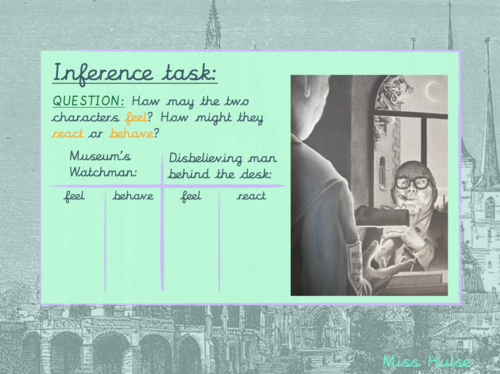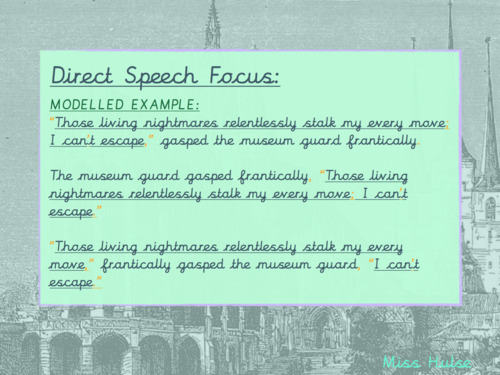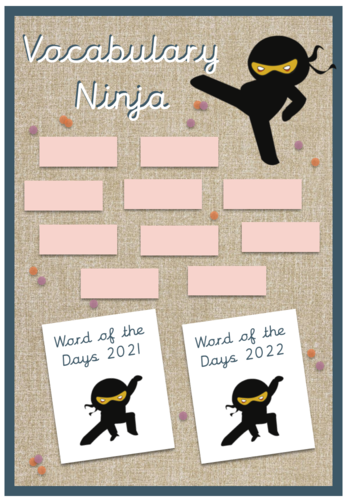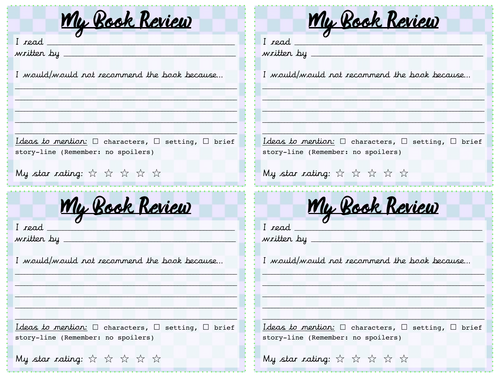143Uploads
17k+Views
17k+Downloads
All resources

English - Night of the Gargoyles L4 (Upper KS2)
This lesson is the fourth from an incredible English scheme of work for upper KS2, using the book ‘Night of the Gargoyles’, inspired by HertsforLearning and adapted for my class. There are ten lessons in total. This was a great tool for creative writing and encouraged some beautiful descriptive pieces particularly from my boys.
(01.03.23) UPDATE: PowerPoint Available to edit (please note this may need slight reformatting depending on your font settings)
Resource bundle includes: Lesson Powerpoint (PDF) and accompanying resources. Each lesson includes modelling for each task.
Slide one: Title page
Slide two: Learning Intention and Targets for Success
Slide three: Starter
Slide four to five: Setting Focus
Slide six to seven: Setting and character description
Slide eight: Atmospheric character/setting description task
Slide nine: Plenary
I hope you love this book as much as me and my pupils did!

English - Night of the Gargoyles L5 (Upper KS2)
This lesson is the fifth from an incredible English scheme of work for upper KS2, using the book ‘Night of the Gargoyles’, inspired by HertsforLearning and adapted for my class. There are ten lessons in total. This was a great tool for creative writing and encouraged some beautiful descriptive pieces particularly from my boys.
(01.03.23) UPDATE: PowerPoint Available to edit (please note this may need slight reformatting depending on your font settings)
Resource bundle includes: Lesson Powerpoint (PDF) and accompanying resources. Each lesson includes modelling for each task.
Slide one: Title page
Slide two: Learning Intention and Targets for Success
Slide three: Starter
Slide four to seven: Inference task
Slide five: Text Focus
Slide six to seven: Imitation Task
Slide eight to nine: Role Play
Slide ten: Feedback Task
I hope you love this book as much as me and my pupils did!

English - Night of the Gargoyles L6 (Upper KS2)
This lesson is the sixth from an incredible English scheme of work for upper KS2, using the book ‘Night of the Gargoyles’, inspired by HertsforLearning and adapted for my class. There are ten lessons in total. This was a great tool for creative writing and encouraged some beautiful descriptive pieces particularly from my boys.
(01.03.23) UPDATE: PowerPoint Available to edit (please note this may need slight reformatting depending on your font settings)
Resource bundle includes: Lesson Powerpoint (PDF) and accompanying resources. Each lesson includes modelling for each task.
Slide one: Title page
Slide two: Learning Intention and Targets for Success
Slide three to five: Direct Speech Focus
Slide six: Peer and teacher feedback
I hope you love this book as much as me and my pupils did!

English - Night of the Gargoyles L7 (Upper KS2)
This lesson is the seventh from an incredible English scheme of work for upper KS2, using the book ‘Night of the Gargoyles’, inspired by HertsforLearning and adapted for my class. There are ten lessons in total. This was a great tool for creative writing and encouraged some beautiful descriptive pieces particularly from my boys.
(01.03.23) UPDATE: PowerPoint Available to edit (please note this may need slight reformatting depending on your font settings)
Resource bundle includes: Lesson Powerpoint (PDF) and accompanying resources. Each lesson includes modelling for each task.
Slide one: Title page
Slide two: Learning Intention and Targets for Success
Slide three: Recap
Slide four: Atmosphere
Slide five: Independent Task Overview
Slide six: Brainstorming Task
Slide seven: Modelled Example
I hope you love this book as much as me and my pupils did!

Vocabulary Ninja Display
This is a super cute display for Vocabulary Ninjas. I personally like to use hessian and matte laminating pouches, but this will work on a variety of backings. There are over 20 individual parts, including the heading.
This display would also work for most times table tracking displays.
I’ve also added a display plan of how I envisage it to be hung, but you can experiment with what works best for your display boards!
I would recommend you printing a few copies of page 6 - I think I went with 6 in the end. I then laminated these with a gloss pouch, so I could use a whiteboard pen to write, remove and rewrite vocabulary onto them.
Enjoy!

Spellings - Homophones (Upper KS2)
This lesson is part of my SPaG (Spelling, Punctuation and Grammar - sometimes abbrieviated to GPS) collection.
This lesson is the third spelling lesson focusing on homophones. I followed the Herts for Learning Spelling scheme to create these resources.
Resource bundle includes: Lesson Powerpoint (PDF), a lesson resource including model sentences and also a wordsearch with all of the weeks words in. There are ten spellings per week.
Slide one: Title page
Slide two to three: Weekly Overview
Slide four: Spelling practice using techniques
Slide five: Find the definitions task
Slide six: Spelling in context - sentences activity
Slide seven: Word search with the spellings activity

Spellings year 3/4 spellings recap (Upper KS2)
This lesson is part of my SPaG (Spelling, Punctuation and Grammar - sometimes abbrieviated to GPS) collection.
This lesson is the second spelling lesson focusing on the year 3/4 spellings. I followed the Herts for Learning Spelling scheme to create these resources.
Resource bundle includes: Lesson Powerpoint (PDF), a lesson resource including model sentences and also a wordsearch with all of the weeks words in. There are ten spellings per week.
Slide one: Title page
Slide two: Weekly Overview
Slide three: Spelling practice using techniques
Slide four: Find the definitions task
Slide five: Spelling in context - sentences activity
Slide six: Word search with the spellings activity

Water Cycle template (Upper KS2)
Resource to accompany a water cycle task, intended for upper KS2. Includes key vocabulary in pre-cursive to assist all learners. You could cut these off for more challenge.

My Book Review
I have created this resource for pupils to review books that they have read. I’m hoping these will act as inspiration for others in my class and will provide a love for reading.
I’m going to display these within my reading corner and perhaps create a floor book with them in.

Printmaking L5/6 - Collagraph making (KS2 Art and Design)
This lesson is the fifth and final of six lessons teaching the skill of collagraph (relief) printing using space as an inspiration (preferably for upper KS2). I have created this scheme using skills that I have acquired over the years, training in Print-making throughout my Fine Art degree and teaching Art and Design to KS2 for over 5 years.
This has been a really popular scheme for my pupils, which teaches a variety of print-making skills: mono-printing, screen-printing, relief and collagraph (relief) printing. I’ve taught it within the classroom and an art room. It would be worth investing in screens for the screen printing lesson.
Resource bundle includes: Lesson plan, Visual Language word mat, Lesson Powerpoint (PDF cursive, PPT and PPT cursive versions available - please note the powerpoints may need slight reformatting depending on your font settings) and accompanying resources/scaffolds. Each lesson includes a starter, modelling for each task, an evalution and an end of the lesson plenary.
Slide one: LO: To design and create a collagraph relief plate.
Slide two: Starter: What is relief printing?
Slide three: Relief plate task and challenge
Slide four: Verbal self-evaluation with modelling
Slide five: End of the lesson quiz
Slide six: End of the lesson quiz (answers)
Slide one: LO: To create a collagraph relief print.
Slide two: Starter: What printing techniques have you tried?
Slide three: Collagraph printing task and challenge
Slide four: Collagraph self-evaluation with modelling
Slide five: End of the lesson quiz
Slide six: End of the lesson quiz (answers)

Printmaking L4 - Polystyrene Relief (KS2 Art and Design)
This lesson is the fourth of six lessons teaching the skill of relief printing using space as an inspiration (preferably for upper KS2). I have created this scheme using skills that I have acquired over the years, training in Print-making throughout my Fine Art degree and teaching Art and Design to KS2 for over 5 years.
This has been a really popular scheme for my pupils, which teaches a variety of print-making skills: mono-printing, screen-printing, relief and collagraph (relief) printing. I’ve taught it within the classroom and an art room. It would be worth investing in screens for the screen printing lesson.
Resource bundle includes: Lesson plan, Visual Language word mat, Lesson Powerpoint (PDF cursive, PPT and PPT cursive versions available - please note the powerpoints may need slight reformatting depending on your font settings) and accompanying resources/scaffolds. Each lesson includes a starter, modelling for each task, an evalution and an end of the lesson plenary.
Slide one: LO: To research printing artists and evaluate their work.
Slide two: Starter: What printing techniques are these?
Slide three: Starter: What printing techniques are these? (answers)
Slide four: Relief printing task and challenge
Slide five: Relief printing self-evaluation with modelling
Slide six: End of the lesson quiz
Slide seven: End of the lesson quiz (answers)

Printmaking L2 - Monoprinting (KS2 Art and Design)
This lesson is the second of six lessons teaching the skill of mono-printing using space as an inspiration (preferably for upper KS2). I have created this scheme using skills that I have acquired over the years, training in Print-making throughout my Fine Art degree and teaching Art and Design to KS2 for over 5 years.
This has been a really popular scheme for my pupils, which teaches a variety of print-making skills: mono-printing, screen-printing, relief and collagraph (relief) printing. I’ve taught it within the classroom and an art room. It would be worth investing in screens for the screen printing lesson.
Resource bundle includes: Lesson plan, Visual Language word mat, Lesson Powerpoint (PDF cursive, PPT and PPT cursive versions available - please note the powerpoints may need slight reformatting depending on your font settings) and accompanying resources/scaffolds. Each lesson includes a starter, modelling for each task, an evalution and an end of the lesson plenary.
Slide one: LO: To design and create a monoprint.
Slide two: Starter: How you describe the style of Andy Warhol?
Slide three: Monoprinting task and challenge
Slide four: Monoprinting self-evaluation with modelling
Slide five: End of the lesson quiz
Slide six: End of the lesson quiz (answers)

Printmaking L3 - Screen-printing (KS2 Art and Design)
This lesson is the third of six lessons teaching the skill of screen-printing using space as an inspiration (preferably for upper KS2). I have created this scheme using skills that I have acquired over the years, training in Print-making throughout my Fine Art degree and teaching Art and Design to KS2 for over 5 years.
This has been a really popular scheme for my pupils, which teaches a variety of print-making skills: mono-printing, screen-printing, relief and collagraph (relief) printing. I’ve taught it within the classroom and an art room. It would be worth investing in screens for the screen printing lesson.
Resource bundle includes: Lesson plan, Visual Language word mat, Lesson Powerpoint (PDF cursive, PPT and PPT cursive versions available - please note the powerpoints may need slight reformatting depending on your font settings) and accompanying resources/scaffolds. Each lesson includes a starter, modelling for each task, an evalution and an end of the lesson plenary.
Slide one: LO: To research printing artists and evaluate their work.
Slide two: Starter: How could you describe the style of Andy Warhol?
Slide three: Screen-printing task and challenge
Slide four: Screen-printing self-evaluation with modelling
Slide five: End of the lesson quiz
Slide six: End of the lesson quiz (answers)

How to punctuate using commas poster (KS2)
A step-by-step visual poster on how to punctuate using commas.

How to punctuate using brackets poster (KS2)
A step-by-step visual poster on how to punctuate using brackets.

How to punctuate using dashes poster (KS2)
A step-by-step visual poster on how to punctuate using dashes.

Co-ordinating and subordinating conjunction poster pack (KS2)
A set of two posters with the classic FANBOYS and ISAWAWABUB acronyms reimagined in my style to support conjunction use.
Bundle




















